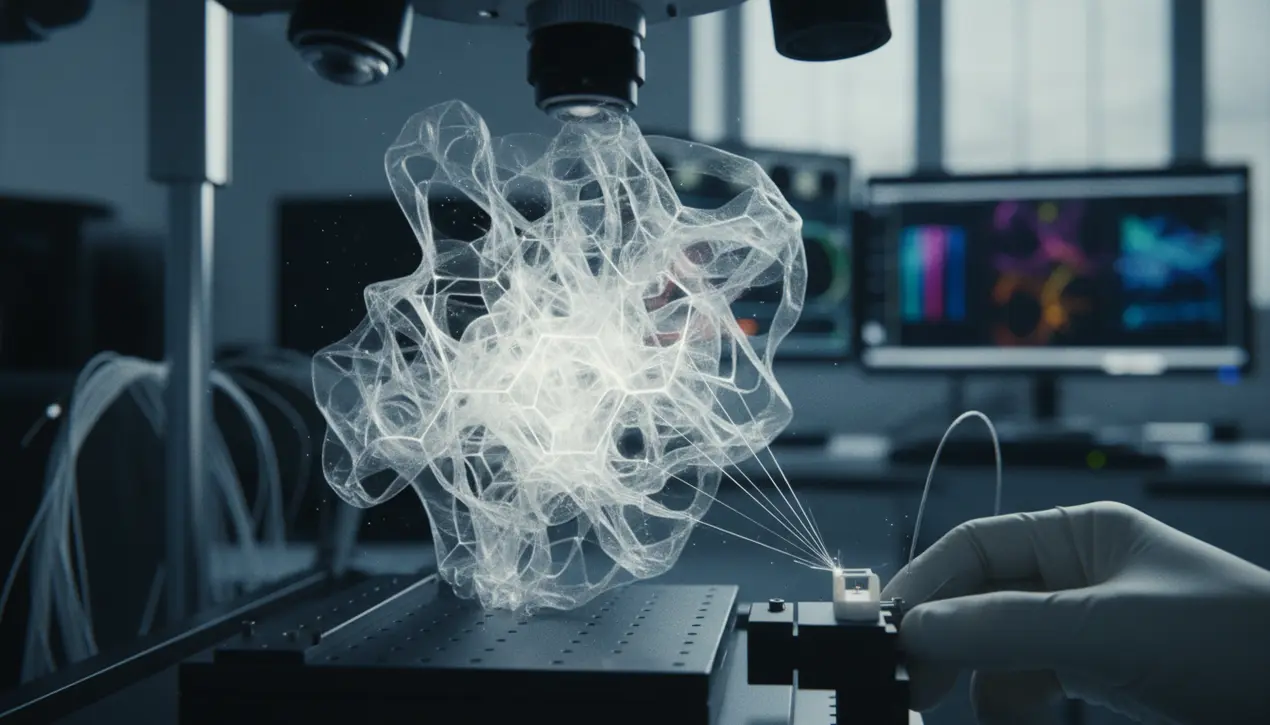
SciencephysicsOptics and Photonics
Wild new “gyromorph” materials could make computers insanely fast
DA
Daniel Reed
15 hours ago7 min read1 comments
In a development that feels like it was pulled from the speculative pages of an academic journal, researchers have engineered a new class of metamaterials dubbed 'gyromorphs,' a breakthrough that elegantly marries the chaotic, fluid-like behavior of disordered systems with the rigorous, large-scale structural patterns of photonic crystals. This isn't just an incremental step; it's a fundamental leap that solves a problem which has long plagued the field of photonics: the inability of quasicrystal-based designs to consistently and completely block light from every conceivable angle.The genius of gyromorphs lies in their architectural duality. Imagine a material that, at a microscopic level, possesses the unpredictable randomness of a swirling liquid, yet on a macro scale, self-organizes into a precise, repeating lattice.This hybrid nature creates a photonic bandgap so robust and omnidirectional that it effectively creates a perfect cage for light, a feat previously thought to be the exclusive domain of theoretical models. For decades, the pursuit of materials with complete photonic bandgaps has been a kind of holy grail in optics, with quasicrystals offering a promising but ultimately flawed path.Their aperiodic patterns were fascinating but often introduced inefficiencies and directional vulnerabilities. The gyromorph approach, by contrast, seems to harness the best of both worlds—the flexibility of disorder and the predictability of order.The implications for photonic computing are nothing short of revolutionary. In our current silicon-based paradigm, electrons moving through copper wires generate significant heat and face speed limits dictated by resistance and capacitance.Light, operating at the speed of, well, light, and generating minimal heat, has always been the tantalizing alternative. The challenge has been building the optical equivalent of transistors and wires—components that can reliably control and route light signals.With gyromorphs, we are looking at the potential foundation for ultra-dense, incredibly efficient optical circuits. These materials could form the backbone of optical isolators and waveguides that are far more compact and effective than anything available today, paving the way for computers that are not just incrementally faster, but orders of magnitude so.This could accelerate everything from complex climate modeling and drug discovery simulations to the training of massive AI models, tasks that are currently bottlenecked by computational throughput. The work echoes the foundational shifts we've seen in other domains, like the transition from vacuum tubes to semiconductors, promising to redefine the physical layer upon which our digital world is built.As someone who follows the trajectory from large language models to the hardware they run on, it's clear that such material science breakthroughs are the unsung heroes of the AI revolution. While we debate the ethics and capabilities of AGI, the physical substrate—the chips and the light guiding them—is being radically reimagined. The development of gyromorphs suggests that the next great leap in computing speed may not come from a smaller transistor node, but from a complete paradigm shift in how we manipulate the fundamental particles of information itself.
#featured
#gyromorphs
#metamaterials
#photonic computing
#light blocking
#quasicrystals
#research breakthrough
Stay Informed. Act Smarter.
Get weekly highlights, major headlines, and expert insights — then put your knowledge to work in our live prediction markets.
Related News
Comments
Loading comments...
© 2025 Outpoll Service LTD. All rights reserved.